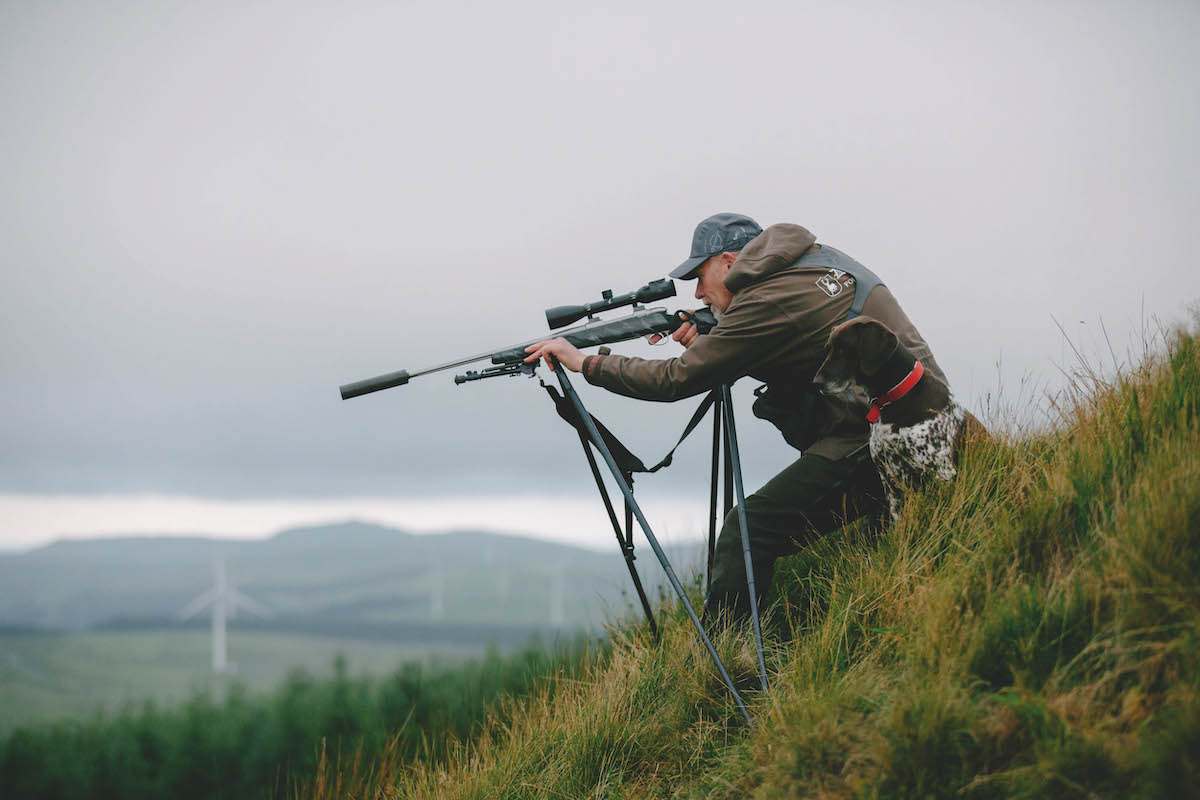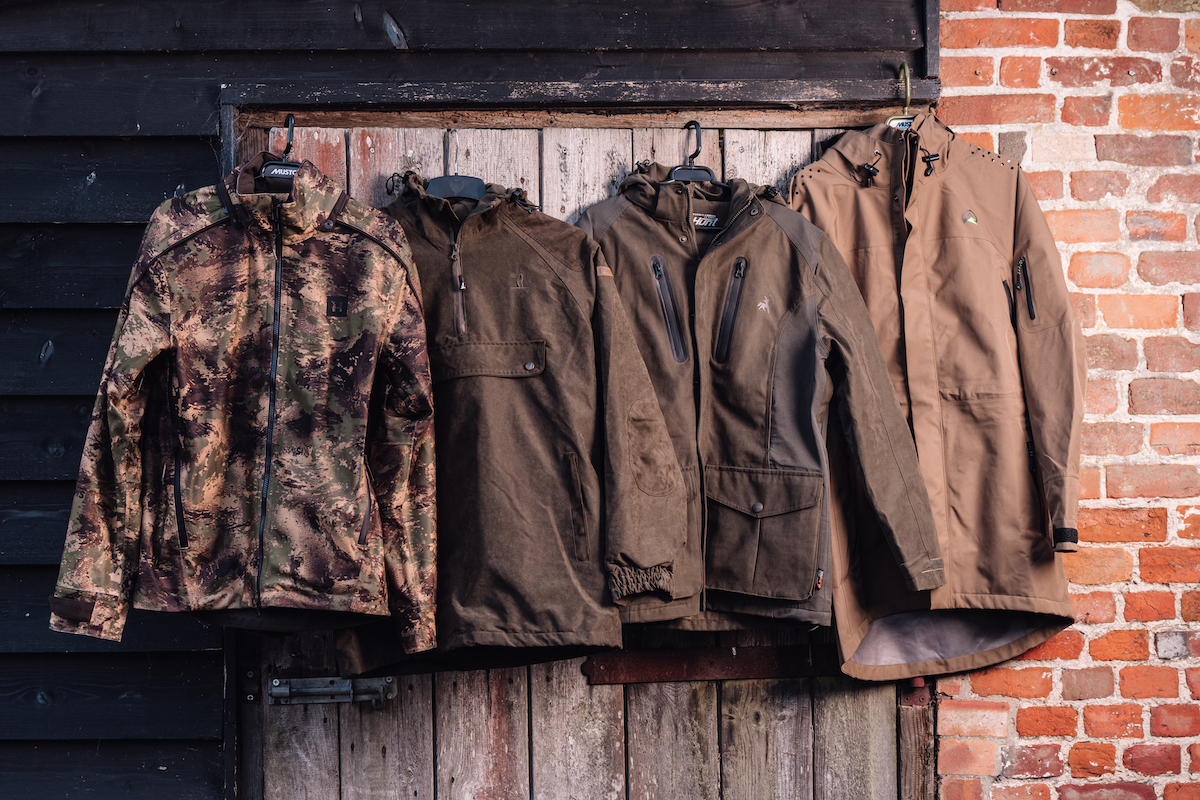What to wear clay pigeon shooting
So you're off to a clay ground. From hat to shoes, here's what to turn up in.
Shooting clays isn’t nearly as formal as a day shooting game. Don’t worry. You don’t need to stock up on tweeds, a suitably fieldsports-themed tie, breeks or plus-fours.
The trick when shooting clays is to wear something that will let you move without restriction. You need to be able to point your gun upwards without clothing tightening across your shoulders (or neckline) and you need to be able to turn freely. But don’t wear anything baggy because it might cause your gun to slip out of position. You’ll need some properly soled footwear (you can’t wear flip-flops or heels) and a cap is a good idea on a sunny day.

Becky McKenzie in action
What a top clayshooting instructor wears
We asked CPSA instructor Becky McKenzie, Sporting Gun contributor, and holder of national and international awards for shooting how she dresses when she’s out on the clays. She advises: “Clay shooting is somewhat different than game shooting, much more movement is required.
Think about the weather and dress accordingly. If it’s chilly, thermals are a good idea because you may have a fair bit of standing around. (Here’s a list of the best shooting thermals.) Layers are always good so you can peel off clothing or put it on as the temperature changes. (Read our list of the best clay shooting jackets.)
Look no further than the Clay Pigeon Shooting Association for some sound advice on what to wear clay pigeon shooting. It says: “For a Have-a-Go day or an introductory lesson, just wear casual clothes that will be comfortable for an hour or two outdoors. In summer, for instance, many shooters wear trainers, jeans and a T-shirt.
“Depending on the weather, you might want to add a fleece or jumper, boots and a waterproof coat.”
Fleece gilets are ideal to wear for clay pigeon shooting and if you decide to go regularly, you might want to invest in a special clayshooting vest, which will have pockets for cartridges and a pad to soften gun recoil.
Marcus Janssen, head of country brands at Schöffel Country & Le Chameau is a keen clayshooter and comments: “When clayshooting, much like game shooting, freedom of movement is key. I like to wear items of clothing which allow for complete movement, for me this means choosing shirts made from lightweight cotton poplin or those which have been designed to allow maximum movement, such as our sporting fit shirts.”
“As the most popular time for clayshooting is in the off season when the weather is often warmer, it’s better to dress in items that are lightweight and cool; you can still be classically styled by opting for neutral colours such as dark green, sand and navy. You should think about getting yourself a good all-season shooting vest, which features shoulder pads to provide a solid mount and grip, an in-built recoil pad and generous reinforced cartridge pockets will set you up for the day. Vests can be layered over polo shirts on warmer days and will allow the option of fitting layers underneath as the off season goes on.”
Mark Heath, Shooting Times reviewer and instructor at West London Shooting School advises: “Firstly safety. It’s advisable to wear a hat to protect from pieces of broken clay. Course setters know where the whole clays are going to land but occasionally broken pieces will fall where they are not expected to. Shooting glasses and hearing protection are also a must. For clothing the easiest advice is dress for comfort and the weather; if you are not comfortable when shooting it will effect your concentration. For wet/cold weather thin layers are in my view always the best to keep you warm /dry and still allow freedom of movement. Modern sports clothing with a thermal base layer where appropriate is a good option. This is especially important around the shoulders, an ‘ action’ style back allows full freedom of movement in a waterproof jacket. In warm / dry weather a skeet vest is a good option.”

Hat, ear protection, gloves. All key for the clay ground.
Clay shooting clothing and kit
Ear protection
This is probably the most important piece of kit to have for a day on the clays. The decibels your ears are going to be exposed to can cause longterm hearing damage, so protect them. You will almost certainly be handed some foam ear plugs as you arrive at the clay ground and maybe ear defenders which you may well find more comfortable. If you’re going to be shooting clays regularly then you might want to invest in bespoke ear plugs or buy your own ear defenders.
There are masses of different types available nowadays, so you’ll be able to find something that you find effective and comfortable that won’t intrude on your concentration.
Eye protection
Fragments of broken clays can cause serious injury if they end up in your eye, so you’ll need eye protection too. Again, these will probably be provided by the clay ground but if you’re going to be shooting regularly you will want your own. Many come with tinted lenses and you can get prescription eye protection too.

Various style safety glasses ranging from sports to casual
On your head
Baseball caps are quite acceptable at the clayshooting ground and will protect a bald pate as well as keeping the sun out of your eyes. Just make sure your hat won’t blow away on a windy day, slip off your head or over your eyes. A cap will also protect your head from any falling shards of clay.

Wear loose clothing clayshooting that won’t restrict your movement – but nothing too baggy
Shirts and tops
If you want to wear a T-shirt that’s fine. Or you could wear a polo shirt or a long sleeved shirt. Nothing too baggy though which might catch when you’re mounting the gun. Your top needs to be fitted without being too tight – you need to be able to move freely. (Take a look at our best shooting shirts.)
Jackets
You might not need one in the summer but in winter a clay shooting jacket is essential to keep you warm and dry. Make sure it has plenty of room around the arms so that you can swing through with the gun.
Are jeans or shorts okay to wear clay pigeon shooting?
Yes, you can wear jeans on a clayshooting ground. You could also wear chinos. In summer shorts would be fine. Again wear something loose rather than tight, so you can move easily.

Broken clays can be dangerous, so wear eye protection, a hat and robust footwear
Footwear
It’s going to be muddy and wet if you’re out on the clay ground in winter and there will be plenty of puddles. So wear your wellies or walking boots, complete with some warm socks because it will be cold, and you don’t want freezing feet putting you off. (Read our list of best shooting boots here.)
Come the dryer weather you can wear trainers. Remember you are handling a gun and you need to be steady on your feet at all times. The grass won’t be trimmed to perfection and paths tend to be gravelly and stony.
Gloves
The barrels of your shotgun are likely to get very hot – some people shoot 500 cartridges on a shoot day. To protect against burned fingers and hands wear gloves. (You’ll find a choice of gloves suitable for shooting here.)








